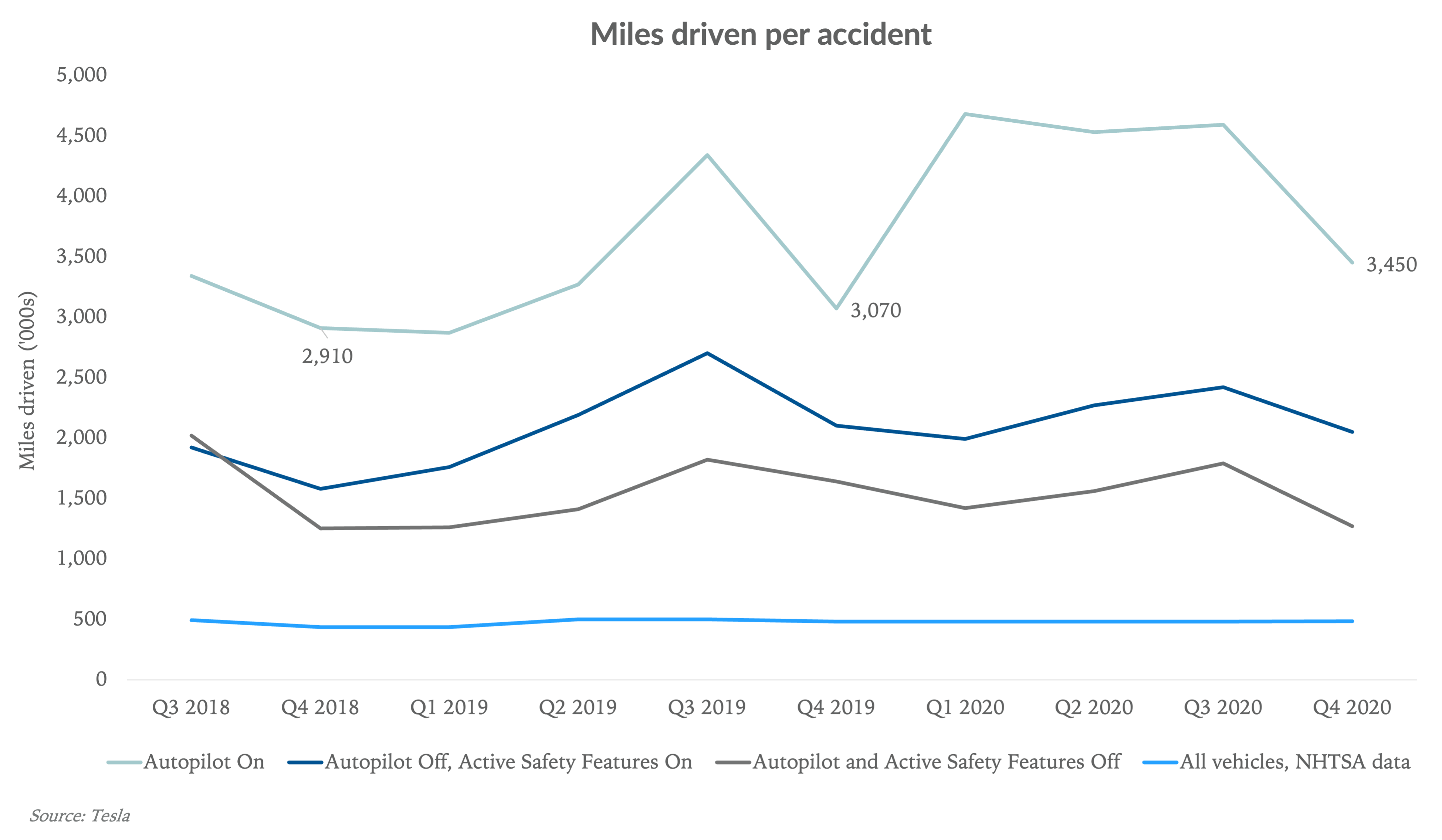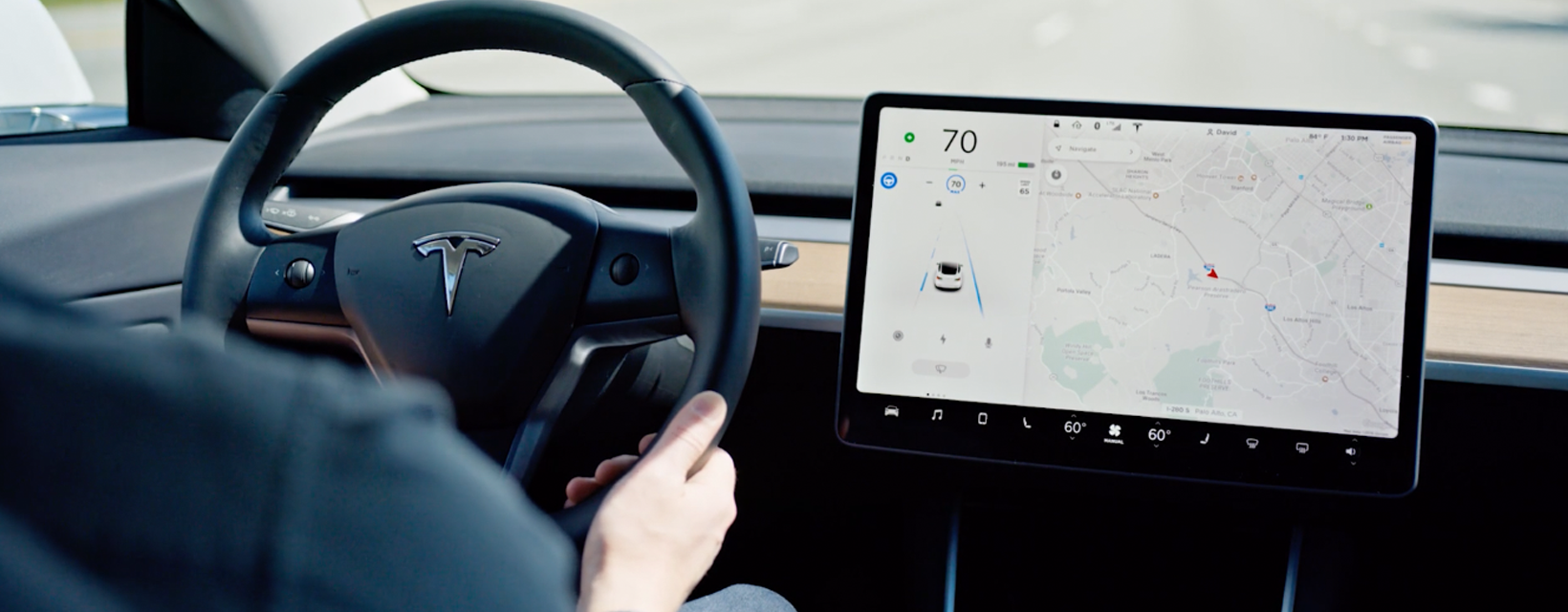Three recent crashes involving Tesla vehicles has put its Autopilot technology under scrutiny. This topic is outside of the recent wider (still limited) release of Full Self-Driving (FSD) beta. Back to the Autopilot safety topic. While investigations are still ongoing, it appears Autopilot was turned on in at least one of the three accidents. The suspicion is that drivers believe Autopilot can do more than it really can, and therefore, don’t pay adequate attention when it’s turned on. And while Tesla warns users that they must be fully attentive even when Autopilot is on, regulators likely don’t think it’s enough.
It’s important to remember that these incidents are not new. Since 2016 there have been at least three fatal crashes in which Autopilot was turned on. As with most transformative tech, there is naturally regulatory concern when failures happen. And given Tesla is the leader in the autonomous vehicle space, they are under a finer microscope.
The big picture, Teslas are safer
While scrutiny is understandable and the rightful role of regulators, it’s missing the bigger picture: Autopilot makes vehicles much safer despite still being in its early stages, and autonomous vehicles stand to drastically reduce vehicle fatalities over the next decade.
- Tesla reports one accident for every 3.7m miles driven while Autopilot is engaged. Over the past two years, the number of miles driven per accident with Autopilot on has increased 18%.
- For perspective, the National Highway Traffic Safety Administration (NHTSA) reports one accident for every ~475k miles driven for all US vehicles.
- Separately, there are three tiers of autonomy features on a Tesla. When Active Safety Features are turned on but Autopilot is turned off, Tesla reports an accident per 2.1m miles driven, and one accident per 1.5m miles when both Active Safety Features and Autopilot are turned off.
A quick background on Tesla ADAS
First, it’s helpful to understand Tesla’s advanced driver assistance system (ADAS), which can be thought of in three tiers:
- Active Safety Features, which includes things like Blind Spot Monitoring, Automatic Emergency Braking, and Front Collision Warning. Comes standard on all Teslas.
- Autopilot, that includes Traffic-Aware Cruise Control and Autosteer. Standard on all Teslas since April 2019.
- Full Self-Driving (FSD). FSD is the highest tier of autonomy, and includes things such as Navigate on Autopilot (Beta), Auto Lane Change, Autopark, and Smart Summon. Can be purchased as an add-on for $10,000.
The facts are the facts
Tesla began voluntarily reporting accident data in Q3 of 2018, and it clearly shows Autopilot reduces the chance of accidents:

Teslas with Autopilot on (green line) drive more miles per accident by a wide margin, averaging 3.7m miles since Q3 2018. Even when Autopilot and Advanced Safety Features are off (gray line), Teslas drive 2-3x the number of miles per accident than the national sample.
Additionally, Autopilot is improving over time. While the green line in the chart shows big spikes and dips, the important thing to note is the improvement over comparable quarters. That’s because there’s seasonality when it comes to vehicle crashes, with more occurring in the winter because of bad weather. Looking at Q4 (December quarter) across 2018, 2019, and 2020, we see the number of miles driven per accident increased from 2.91m to 3.45m, an increase of 9% on average per year (18% over a two-year period).
From a data perspective, it makes sense why Autopilot is improving. Driven by algorithms, the more data Tesla vehicles collect the better its ADAS gets. We estimate the US Tesla fleet has grown from around 150,000 in 2017 to 750,000 today, equating to 5x more data.
Keeping things in perspective
Taking a step back, Autopilot and especially FSD are in their early days and accidents involving these technologies will continue to occur. It will take time for people to become comfortable with machines taking more driving functions from humans, as it’s easier and more comforting to place liability on a human than a machine.
That said, we believe autonomous systems will drastically reduce the number of vehicle fatalities, similar as seatbelts did in the ’70s but on a greater scale. For perspective, there are still around 35k-40k vehicle fatalities every year in the US, around the top 10 causes of death. This equates to 11 fatalities per 100k people, compared to 25 per 100k in 1970.
In the end, autonomous vehicles will take longer to disrupt transportation than most people think, but ultimately be safer and more transformative than most appreciate.
